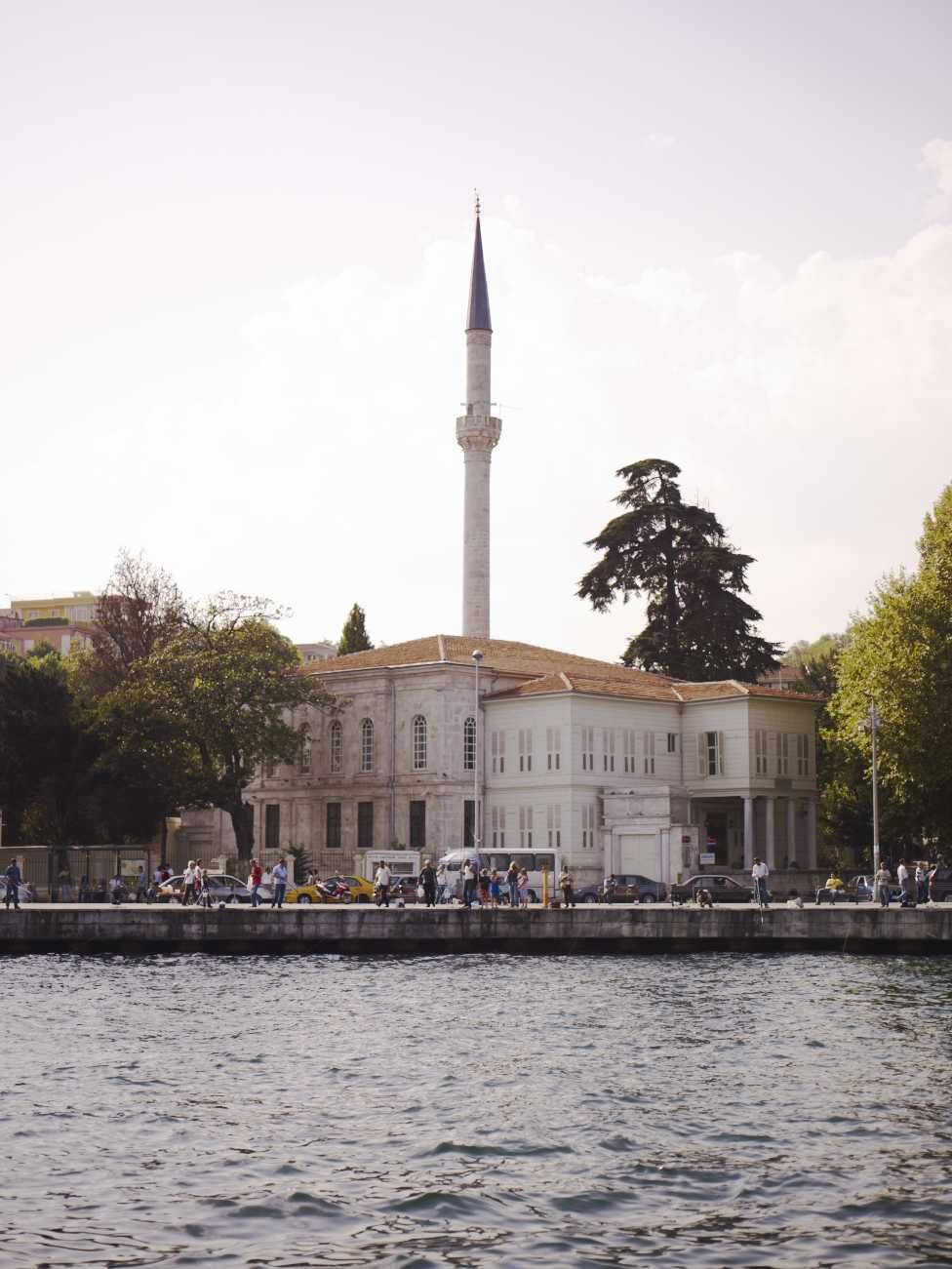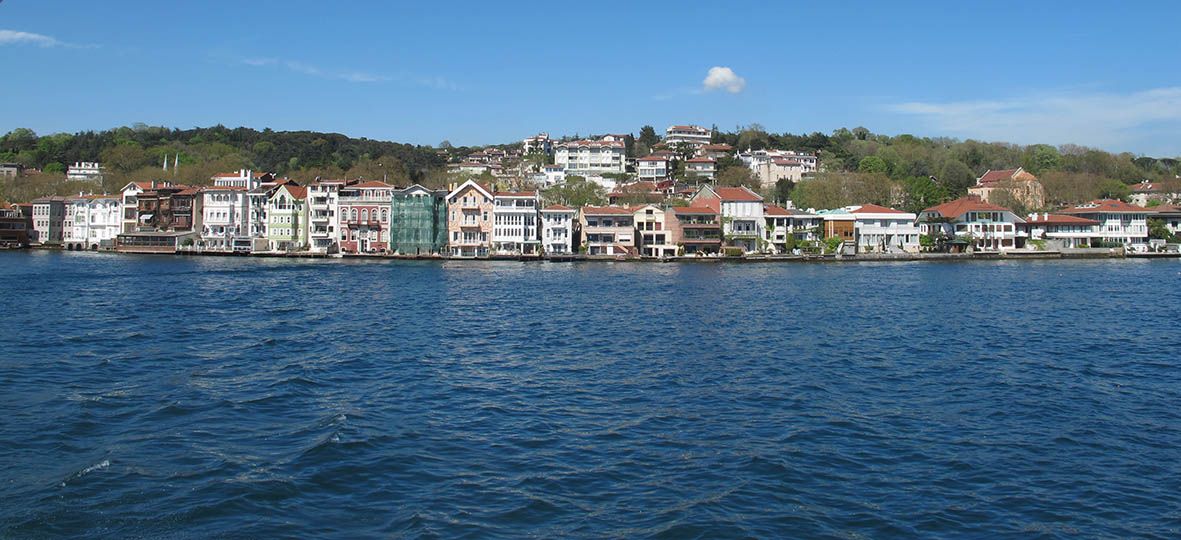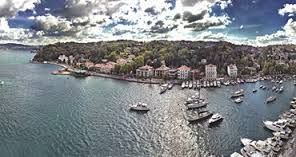Buy or gift a stand-alone digital subscription and get unlimited access to dozens of back issues for just £18.99 / $18.99 a year.
Please register at www.exacteditions.com/digital/cornucopia with your subscriber account number or contact subscriptions@cornucopia.net
Buy a digital subscription Go to the Digital EditionSarıyer – a working-class, Black Sea town – rules the upper Bosphorus. Alight for the Sadberk Hanım Museum (Büyükdere), and the fish restaurants of the two 'Kavaks', Rumeli and Anadolu.
Sarıyer – literally 'yellow place' or 'yellow slope', from the colour of the rocky hill (Sevastopol's original Turkish name was Akyar, white slope) – is the name shared by the town and the Bosphorus's northernmost European administrative district, which extends from Rumelhisarı all the way to the Black Sea. It is also the penultimate town, as you head north towards the Black Sea with only Rumeli Feneri further up, and the small village of Garipçe, now being gleefully wrecked by the heinous new bridge being forced on the city by the developers' party – which needless to say has also destroyed the local fish stocks, the triumph of 'AK-ology' over ecology.
The key towns within greater Sarıyer are Baltalimanı, Emirgan, İstinye, Yeniköy, Tarabya and Büyükdere. In the hills is the mini-Manhattan of Maslak, recently grabbed from greater Şişli.
The area's chief attractions are one or two fine seaside walks, such as along the coast road between Yeniköy and Tarabya, two superb museums, the Sakıp Sabancı Museum in Emirgan and the Sadberk Hanım Museum in Büyükdere, and the gorgeous Belgrade Forest. One or two fine summer embassy buildings survive in Tarabya – the Germans have taken great care of theirs, the Italians should be utterly ashamed of the state of theirs (by the great D'Aronco), ditto the French – and in Büyükdere, where the Spanish still maintain their beautiful house in tip-top condition and the Russians appear about to restore theirs. The summer embassies feature in Cornucopia No 6. As for the town – well you hardly need to travel along the Black Sea coast after you have been here: it is very very Black Sea.
Sarıyer – literally ‘yellow place’ or ‘yellow slope’, from the colour of the rocky hill (Sevastopol’s original Turkish name was Akyar, white slope) – is the name shared by the town and the Bosphorus’s northernmost European administrative district, which extends from Rumelhisarı all the way to the Black Sea. It is also the penultimate town, as you head north towards the Black Sea with only Rumeli Feneri further up, and the small village of Garipçe, now being gleefully wrecked by the heinous new bridge being forced on the city by the developers’ party – which needless to say has also destroyed the local fish stocks, the triumph of ‘AK-ology’ over ecology.
The key towns within greater Sarıyer are Baltalimanı, Emirgan, İstinye, Yeniköy, Tarabya and Büyükdere. In the hills is the mini-Manhattan of Maslak, recently grabbed from greater Şişli.
The area’s chief attractions are one or two fine seaside walks, such as along the coast road between Yeniköy and Tarabya, two superb museums, the Sakıp Sabancı Museum in Emirgan and the Sadberk Hanım Museum in Büyükdere, and the gorgeous Belgrade Forest. One or two fine summer embassy buildings survive in Tarabya – the Germans have taken great care of theirs, the Italians should be utterly ashamed of the state of theirs (by the great D’Aronco), ditto the French – and in Büyükdere, where the Spanish still maintain their beautiful house in tip-top condition and the Russians appear about to restore theirs. The summer embassies feature in Cornucopia No 6. As for the town – well you hardly need to travel along the Black Sea coast after you have been here: it is very very Black Sea.
Alas, boats have become fewer and slower since the present regime came to power. One of the first things they did was flog off the fleet of graceful steamers that silently plied Istanbul’s waters. In truth, that left the new metro. From the last stop, Hacıosman (25 mins from Taksim), it is a five-minute taxi ride to either of the excellent private museums, the Sadberk Hanım and the Sakıp Sabancı. One last dolmuş route links Yeniköy to Beykoz, on the European shore.
Minibuses and buses hurtle up and down the Bosphorus-side road as far as İstinye, south of which only buses continue.

One of the most appealing villages on the European shore, immeditately north of the Fatih Sultan Mehmet Bridge. Also included are the villages of Baltalimanı and Boyacıköy.

A prosperous town on the European shore, where the Upper Bosphorus opens out to its widest point. It still has a fine unbroken line of yalıs, and in Aleko’s the last old-fashioned fish restaurant on the European shore.

Tarabya is the prettiest cove on the on the European side, thanks to the handsome woods of the summer embassies to north and south of it. The Germans sadly are the only ones to have painstakingly restored their palace.

Cornucopia works in partnership with the digital publishing platform Exact Editions to offer individual and institutional subscribers unlimited access to a searchable archive of fascinating back issues and every newly published issue. The digital edition of Cornucopia is available cross-platform on web, iOS and Android and offers a comprehensive search function, allowing the title’s cultural content to be delved into at the touch of a button.
Digital Subscription: £18.99 / $18.99 (1 year)
Subscribe now